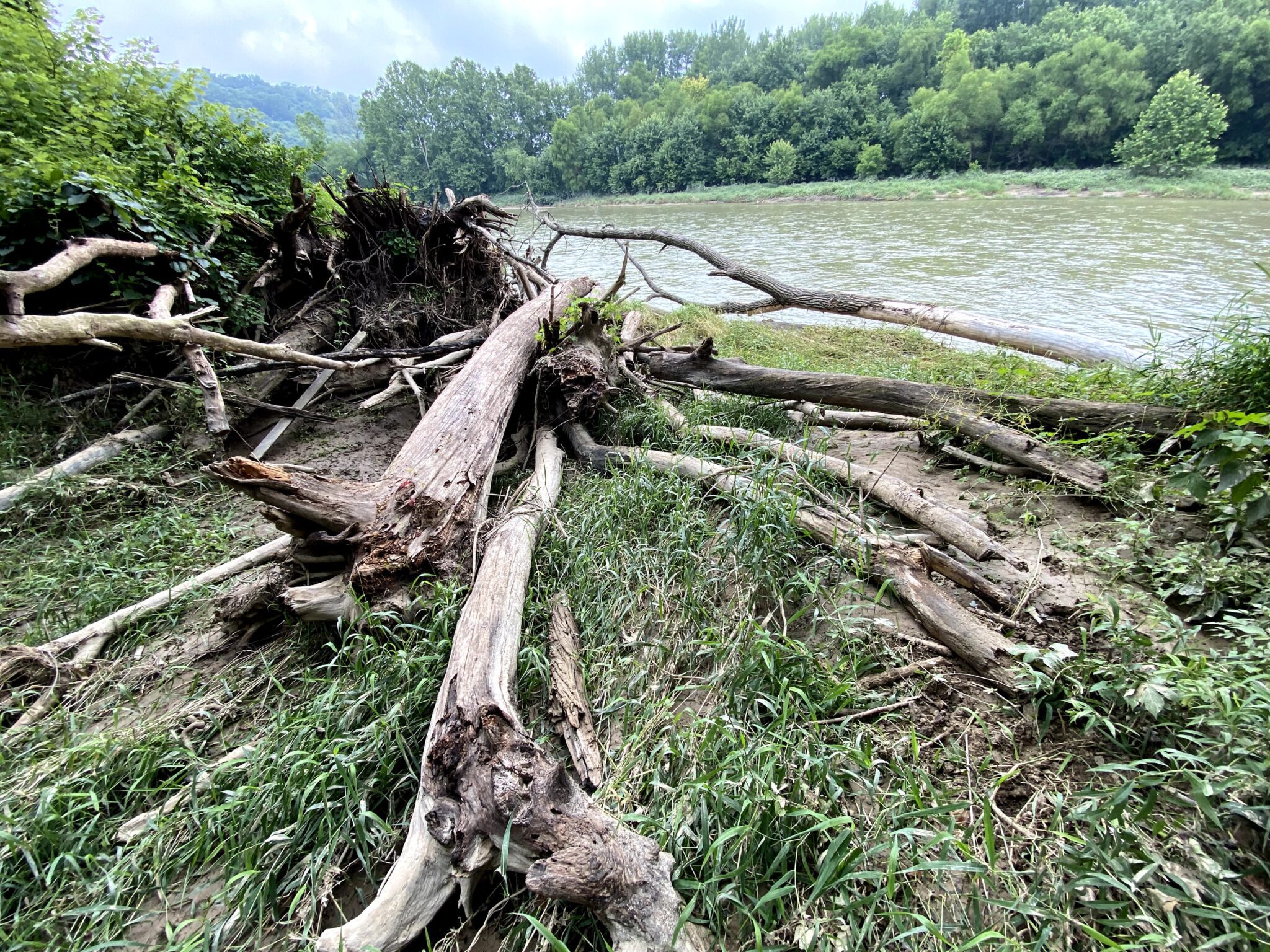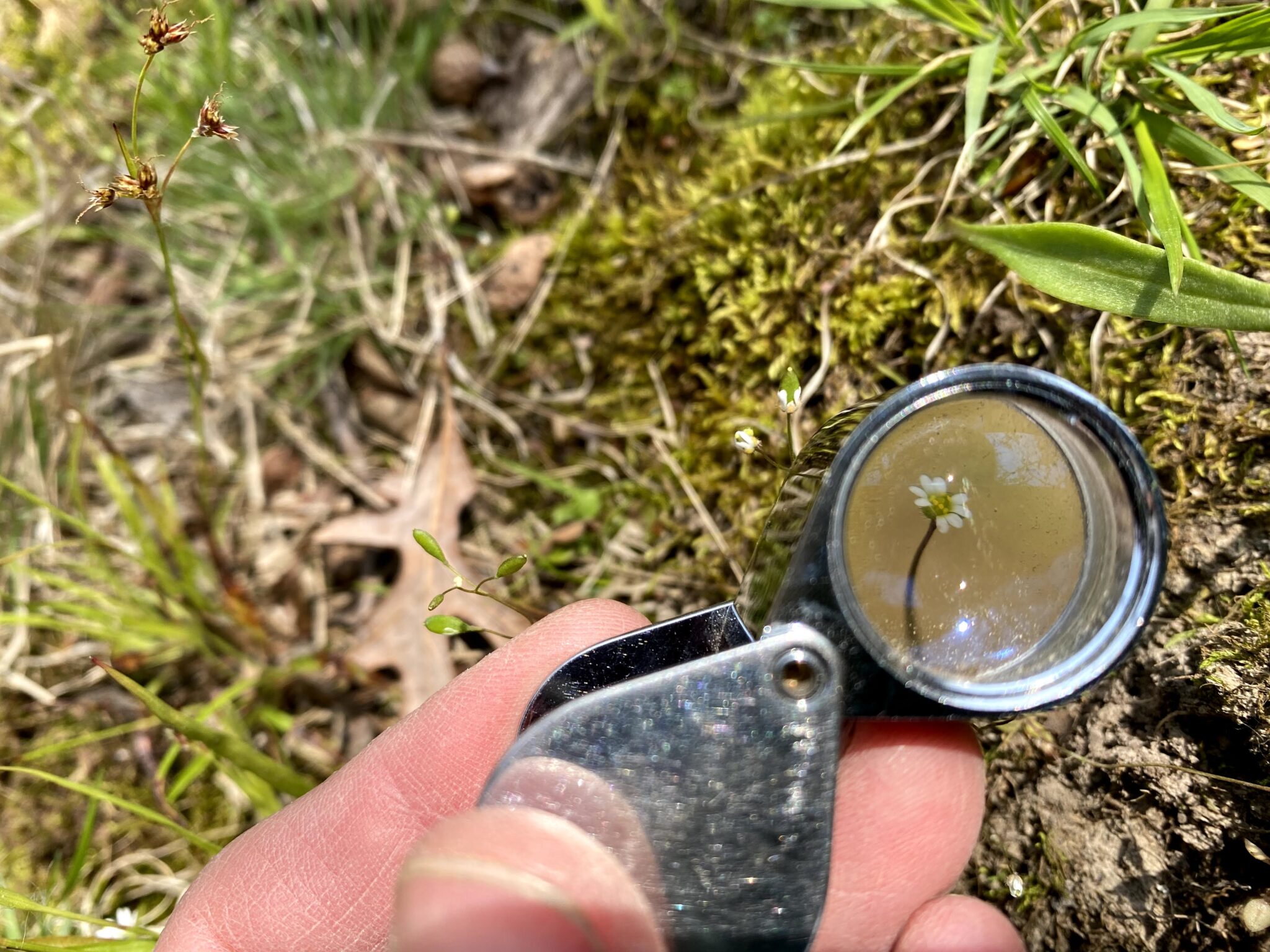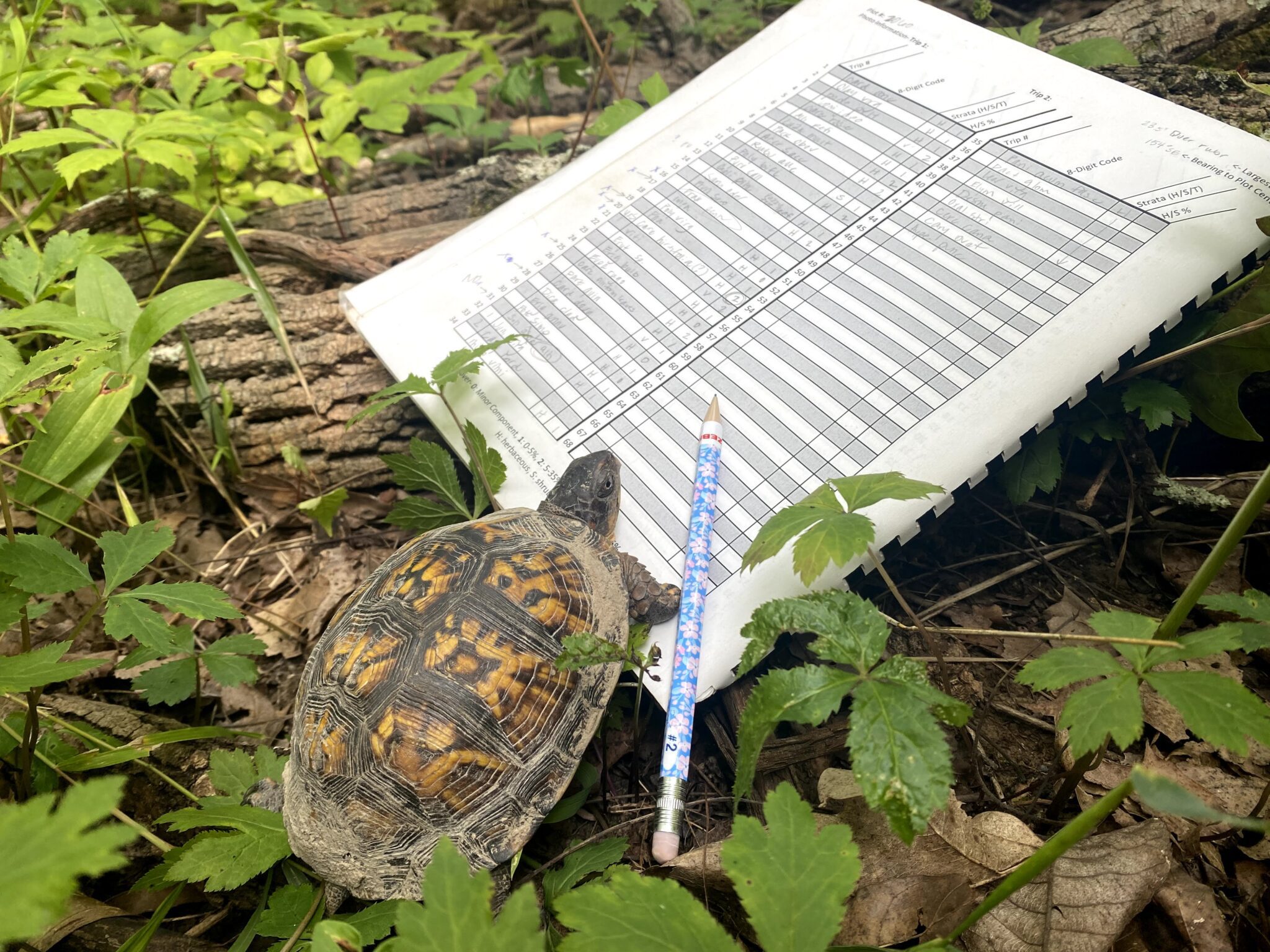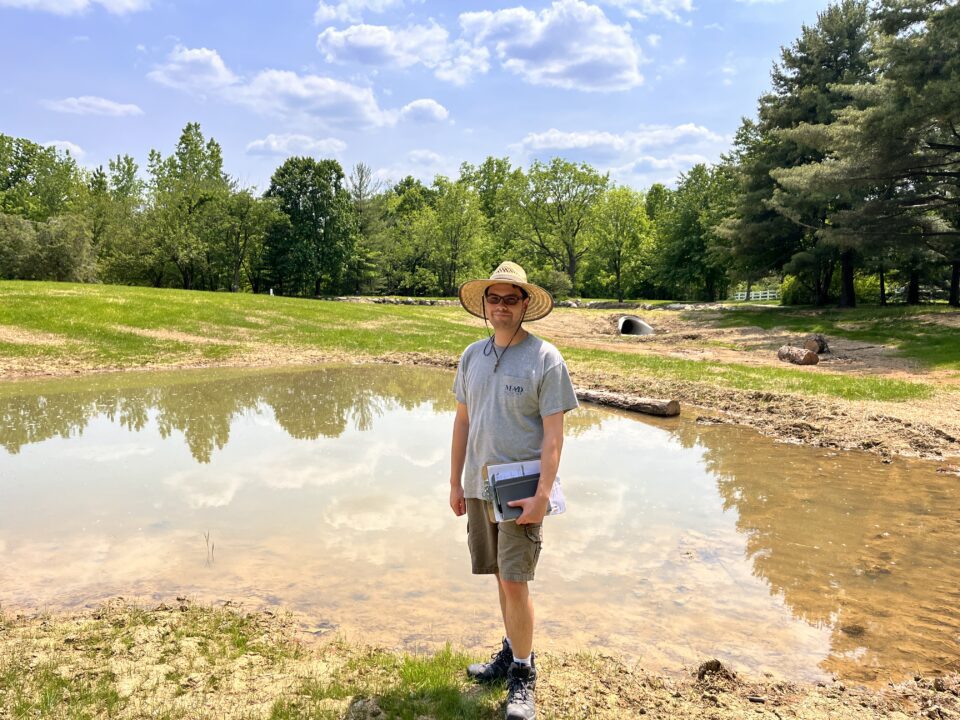
Riverbank plot along the Miami Whitewater River

Wood Poppy

Beelining it for our vehicles after a large snow cell hit midday.
Botanical Adventures
The top three photos were taken in the same week in April in the same park. It was a good thing we packed layers! The bottom three are views from the same parks in August, when the weather wasn't as erratic, but the heat and humidity were intense.

Whitlow's Grass

Jenny contemplating how to traverse the sea of wood nettle.

An eastern box turtle lending a "hand" in recording species data.
This year brought another opportunity to study plant communities in Hamilton County (Cincinnati area), Ohio. Jenny Adkins led the effort, visiting over 75 plots twice throughout the growing season in order to catch fleeting species that are season-specific, such as spring beauty (Claytonia virginica). While identifying plants seems like a carefree, Victorian-era study, depending on the terrain and habitat, it can be anything but. This year’s survey area had our team on an adventure that sounded like a Mark Twain story- constructing bridges out of beaver-chewed logs, climbing trees to see the extent of plots, scaling riverbanks, crossing acres and acres of eight-foot-tall corn, sweating through clothes (many times over), and covering every square inch of skin to ward off the insatiable mosquitos. It rained, it snowed, there was sweltering heat, but that’s the fun of field work!
For those of you unfamiliar with botanical surveys, there are two formal assessments that we commonly perform- the Vegetative Index of Biologic Integrity (VIBI) and Floristic Quality Assessment (FQA). The VIBI is frequently used to determine the quality of a wetland community, while the FQA is used to determine the intactness of a community based on the number of species present and their associated cover. Both take a skilled botanist to identify every plant within the plots and keep on schedule (and budget!).
To date, we have identified 827 species. The bulk of which are in mixed deciduous forests with a smattering of riparian corridors, seeded prairies, ponds, and vernal pools. This year, many plots were along the floodplain of the Miami Whitewater River. Those of you familiar with Ohio floodplains will know that this means one thing for sure- nettles! Wood nettle (Laportea canadensis) is a common waist-high broadleaf forb that grows in periodically flooded areas along large river systems. The trichomes (plant hairs) along the stem and petioles are incredibly irritating to your skin if brushed up against. It’s frequently confused for stinging nettle (Urtica dioica), for the obvious reason that it stings, but the wood nettle has alternating leaves, while stinging nettle has opposing leaves. If you can get past the discomfort of nettle and the incessant whine of mosquitoes, there are so many beautiful things to see when studying plants. The team saw a family of bald eagles, innumerous insects, and as tradition will have it, several eastern box turtles.








